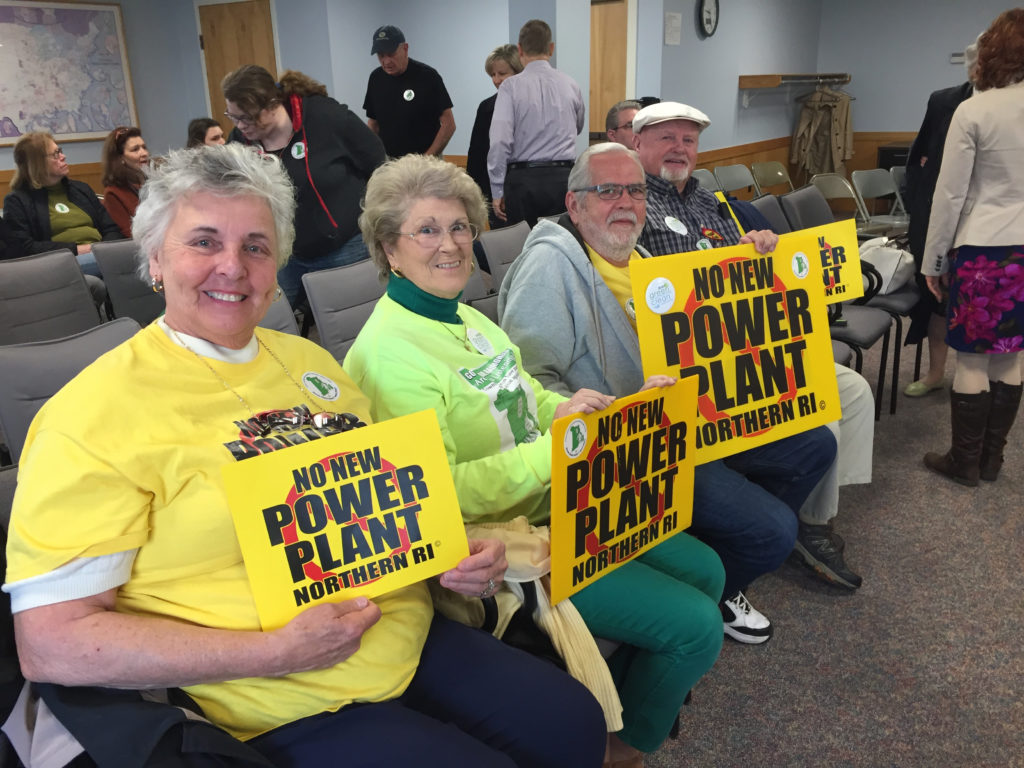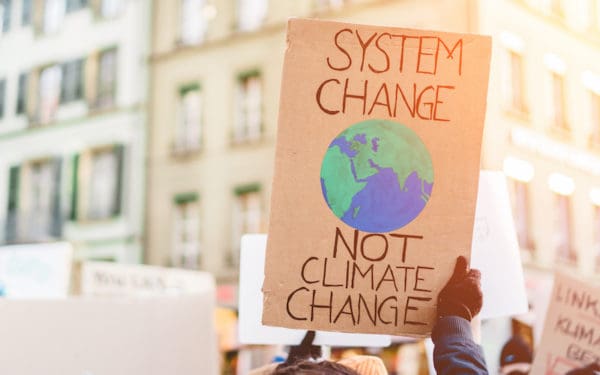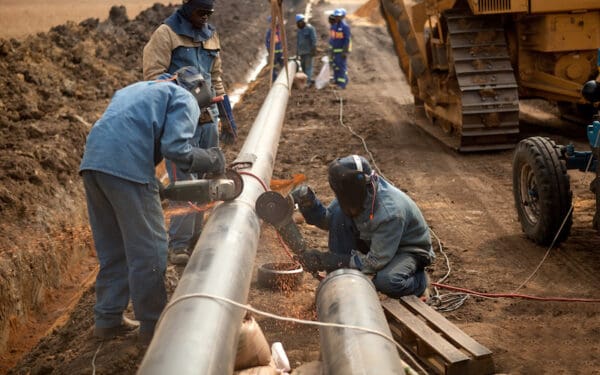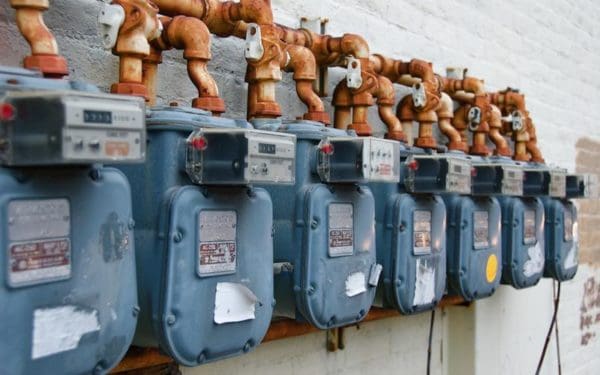
Burrillville residents drove to Warwick to attend the hearing between Invenergy, Burrillville, and CLF. Photo: Bethany Kwoka for CLF
For two years, Invenergy has been trying to build an unneeded, unwanted fossil fuel power plant in the heart of a state forest in Burrillville, Rhode Island. But Burrillville – along with nearly every other town across the state – has stood against the project, as it would harm local communities, devastate an important wildlife corridor, and increase Rhode Island’s climate-damaging emissions.
Over those two years, Invenergy has struggled to secure the water needed to run the plant, been caught trying to pass off millions of dollars in costs to Rhode Island residents, and has had one of its two proposed turbines disqualified from an important yearly auction, showing that the region doesn’t need this power. Despite all of this, the big energy corporation is still trying to move forward with its fracked gas power plant.
CLF has fought alongside local communities throughout this process. The fight is now playing out at the Rhode Island Energy Facilities Siting Board, which ultimately decides whether or not to grant Invenergy the permit they need to build.
An Unnecessary Plant That Would Cause Unacceptable Harm
On April 26, Invenergy, CLF, and Burrillville all had the opportunity to state their cases to the Siting Board – with Rhode Island residents and the press standing by. Each group gave an opening statement as part of what will be a long Final Hearing, with meetings occurring periodically until late October.
Invenergy spoke first, repeating its same tired arguments about how our region needs more polluting gas and how the plant wouldn’t cause “unacceptable harm” to the people of Burrillville or the animals who depend on the forested area. We know both of these claims are false, though.
As CLF Senior Attorney Jerry Elmer explained, it’s clear that this plant is not needed. Every year, the regional energy operator holds an auction that ensures there will be enough electricity to power the region’s homes and businesses three years in the future. The results of the last several auctions have shown that the Invenergy plant isn’t needed, as there is already a surplus of power without it. Plus, back in November, one of Invenergy’s two planned turbines was barred from even participating – a sure sign that the region does not need the power it would produce.
All of this shows that New England doesn’t need this plant (particularly as the region continues to adopt more clean energy like solar, wind, and energy efficiency). What’s more, the increased carbon emissions from the plant would contribute to climate change and make it impossible for Rhode Island to reach its goal of cutting climate pollution by 80 percent by 2050.
The Blackstone heritage corridor – a vital pinch point for connecting forested land that lets animals navigate freely through New England – also doesn’t need this plant. This very spot has been rejected previously for construction because of how ecologically important it is to the region. Studies going back to the 1960s have shown that this area needs to be left undisturbed by anything more than hiking trails and campgrounds.
Michael McElroy, who spoke on behalf of Burrillville residents, additionally drew attention to how much pollution this plant would spew. He countered Invenergy’s claims of “acceptable levels of harm” by pointing out that there really isn’t an acceptable level of toxic air pollution for children and families to breath.
Invenergy Has Lost Rhode Island’s Trust
While Invenergy tried and failed to paint itself as progressive on climate, Mr. Elmer reminded the Siting Board about the various times Invenergy has lied to them. These include when Invenergy presented false information to Burrillville residents and when the company quietly tried to pass more than $100 million in costs onto New England families and businesses but didn’t tell the Siting Board. This demonstrated history of misleading the Siting Board, the regional grid operator, and the public showcases yet another reason Invenergy should not be granted a permit to build this plant.
Invenergy has also worked hard to silence critics. Of the state’s 39 cities and towns, 32 have passed resolutions against the proposed plant (and three out-of-state towns have done so as well). But back in October, Invenergy dismissed these resolutions as “irrelevant” and a “waste of time.” This display of contempt doesn’t foster much goodwill between the people of Rhode Island and the Chicago-based energy corporation.
CLF and Rhode Islanders Stand Against Invenergy
These 35 cities and towns passed resolutions against the proposed plant because they know how much it would harm both the environment and local communities. Rhode Islanders from across the state also came to the Siting Board hearing in April to protest the plant, holding signs to highlight their opposition.
Fighting the plant is about preserving clean air for our communities and protecting the Blackstone heritage corridor for the wildlife that uses it as a refuge. It’s about sheltering the generations to come from the harmful impacts of pollution and climate change.
Most people in Burrillville and the surrounding towns do not want this plant, and New England doesn’t need the energy it would produce. So rather than let Invenergy bowl over both the community and Rhode Island’s climate goals, New Englanders are standing up against another needless dirty power plant and refusing to let Big Gas harm our future.




